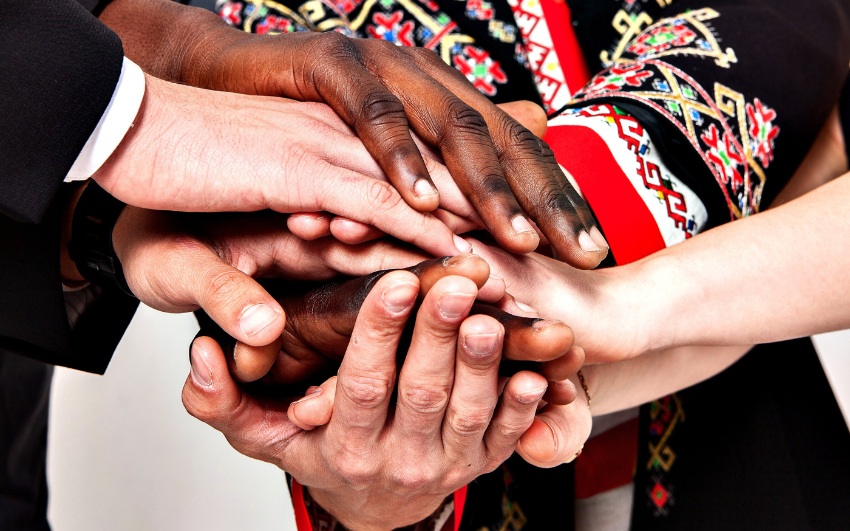Across Australia, ensuring cultural safety in the workplace is becoming increasingly important. No matter your employees’ cultural background, everyone must feel safe, included and respected. By building a safety culture in the workplace, organisations can cultivate a positive work environment where all employee’s cultural identities are not only valued but also celebrated, embracing diversity and inclusion.
What Is Cultural Safety in the Workplace?
Defining Cultural Safety
Cultural safety is an environment where people from different backgrounds feel safe to express their cultural identities without fear of discrimination. In workplaces, it involves creating an inclusive work environment where employees from all walks of life, backgrounds and cultures are respected and inclusivity promoted.
Why Workplace Cultural Safety is Important in Australia
Australia is home to a diverse and rich tapestry of cultures, making it essential for workplaces to embrace diversity. Unconscious biases can lead to an organisational culture that lacks diversity and balance, even when there is a wide range of cultural backgrounds to hire from. This is especially relevant for organisations employing Aboriginal and Torres Strait Islander Australians. It is crucial for organisations to provide opportunities to individuals from all walks of life and to avoid discrimination against those from different backgrounds.

Understanding Key Principles of Cultural Safety
Respect and Understanding
At the core of cultural safety is respect and understanding for cultures that may be different to the ones people are familiar with. Encouraging open-mindedness and active listening or participation across team members helps to build trust and respect. Acknowledging traditions or cultural holidays can help build mutual respect within the workplace.
Self-Reflection and Unconscious Bias Awareness
Those running the hiring process such as HR departments, managers and business leaders should engage in diversity workshops to address their own unconscious biases. Getting involved in local communities and encouraging employees to share parts of their cultures with the team can also encourage self-reflection and reduce unconscious bias.
Empowerment and Shared Decision-Making
Empowering culturally diverse employees to voice their perspectives and gain insights into different cultures is also beneficial. This helps create a workplace culture where people from different backgrounds feel safe to voice their opinions. By giving different perspectives a platform, organisations will not only enhance their organisational culture but also drive creativity and innovation. This drives organisations forward as they are not harnessing or benefiting only one type of culture or demographic but rather taking a holistic approach to cultural diversity.

How HR Professionals Can Promote Cultural Safety
Developing Inclusive HR Policies
HR policies should be set up to protect against cultural discrimination. Establishing clear policies and encouraging an environment where employees feel safe to come forward to report incidents helps create a culture of safety. Organisations should ensure their policies are aligned with Australian anti-discrimination laws to reinforce to employees their commitment to cultural safety in the workplace. Integrating these policies into the onboarding document keeps all employees with the necessary knowledge to creating cultural safety.
Cultural Awareness Training
Offering frequent cultural awareness training sessions for employees and managers is greatly beneficial in improving workplace culture. It showcases that the organisation is committed to celebrating diversity. As varying ages and demographics may have a different understanding of what is appropriate, this can help create an informed workplace.
Encouraging Open Communication
Creating safe spaces for employees to celebrate their culture is another great way to encourage open communication in the workplace. Implementing anonymous surveys can also help build a safety culture in the workplace as people feel comfortable putting their concerns forward.
Practical Tips for Business Owners
Creating a Welcoming Physical Environment
Making visual adjustments to the workplace can encourage employees to celebrate their cultural differences. Hosting potlucks where everyone can bring food from their culture is another great opportunity for employees to learn about each other’s cultural backgrounds. Displaying resources that acknowledge Australia’s cultural diversity is another way an organisation can showcase their commitment to cultural diversity and safety.
Culturally Safe Leadership Practices
As employees look to their managers to set the tone of the workplace, leaders should model respectful and inclusive behaviour. Building a safety culture in the workplace starts from the top down so it is paramount that business owners and managers do their part to facilitate a culturally safe work environment.

Measuring Cultural Safety in Your Workplace
Key Metrics and Indicators
Organisations should utilise both qualitative and quantitative measures to assess cultural safety. One key indicator of a healthy culture of safety is employees feel comfortable voicing their opinions, low turnover rates, and the organisation has a diverse and inclusive workforce. To assess an organisation’s workplace culture safety, organisations can conduct anonymous surveys to review employee satisfaction and incident reports related to cultural issues. Regularly maintaining these metrics will keep organisations informed.
Conducting Cultural Safety Audits
Conducting a cultural safety audit will help ensure organisations are on track to creating a culture of safety for their employees. This may look like a review of assessing current policies, gathering employee feedback and identifying areas of improvement. Outsourcing an organisation’s cultural safety check can also remove unconscious bias.

The Benefits of Cultural Safety for Business Success
Enhancing Employee Retention and Satisfaction
Happy employees mean greater retention and satisfaction. This is why it is in an organisation’s best interest to create a culture of safety and acceptance.
Boosting Innovation and Creativity
When organisations have different perspectives and ideas to bounce off of, it helps foster an environment of innovation and creativity. Employing people from different backgrounds and creating a culture that encourages employees to share their ideas freely it helps lead to more effective solutions.
Strengthening Brand Reputation
A commitment to cultural safety enhances employer branding, making an organisation more attractive to potential employees. Being recognised as an inclusive and culturally safe employer can significantly enhance a business’s reputation in Australia’s competitive market.

Common Challenges in Implementing Cultural Safety and How to Overcome Them
Resistance to Change
Older workforce demographics may have a resistance to change and as such organisations may struggle to implement new policies. Using clear communication and team building to encourage open communication and celebrate people from different backgrounds will help to break down these barriers.
Addressing Microaggressions and Subtle Discrimination
Microaggressions—subtle, often unintentional, discriminatory remarks—can undermine cultural safety. Identifying these behaviours and addressing them constructively is essential for promoting positive workplace interactions. Implementing training sessions can provide employees with strategies to confront microaggressions and encourage respectful dialogue.

Cultural Safety: Final Takeaway
Fostering a culture of safety in the workplace is proven to increase a business’s success as the more valued and respected employees feel, the higher the retention rates. By prioritising cultural safety, HR professionals and business owners can create workplaces where all employees feel valued and respected.
E.L Blue specialises in workplace safety consultants and offers a free health check to get organisations started. Contact us today to empower your business towards a culture of safety and inclusion.

